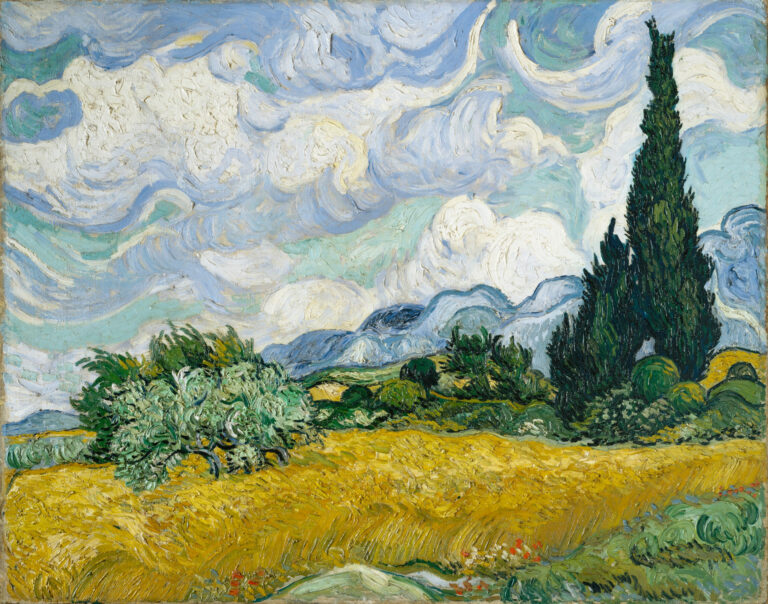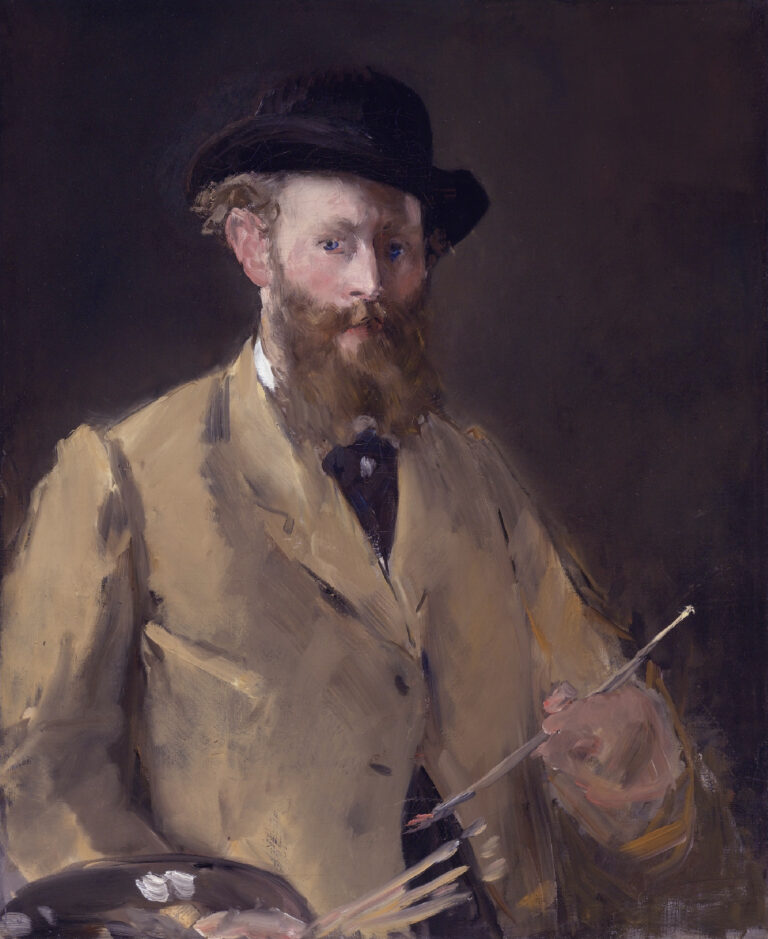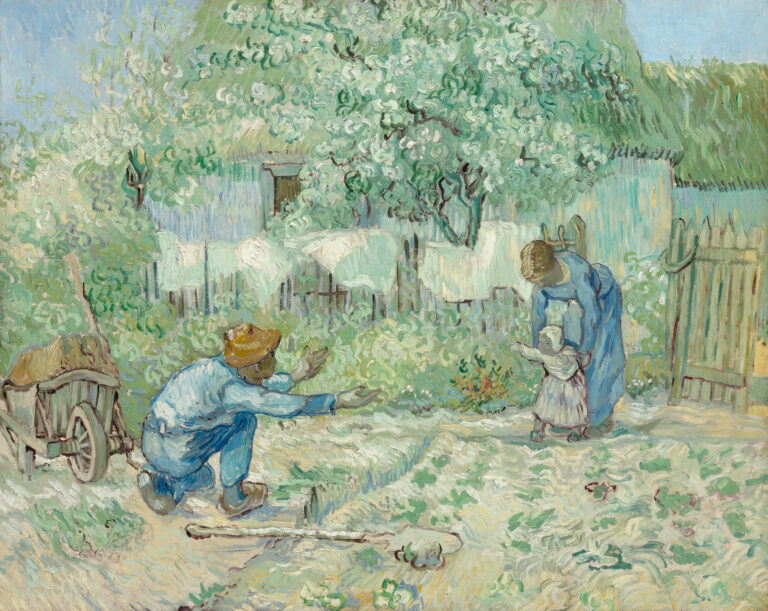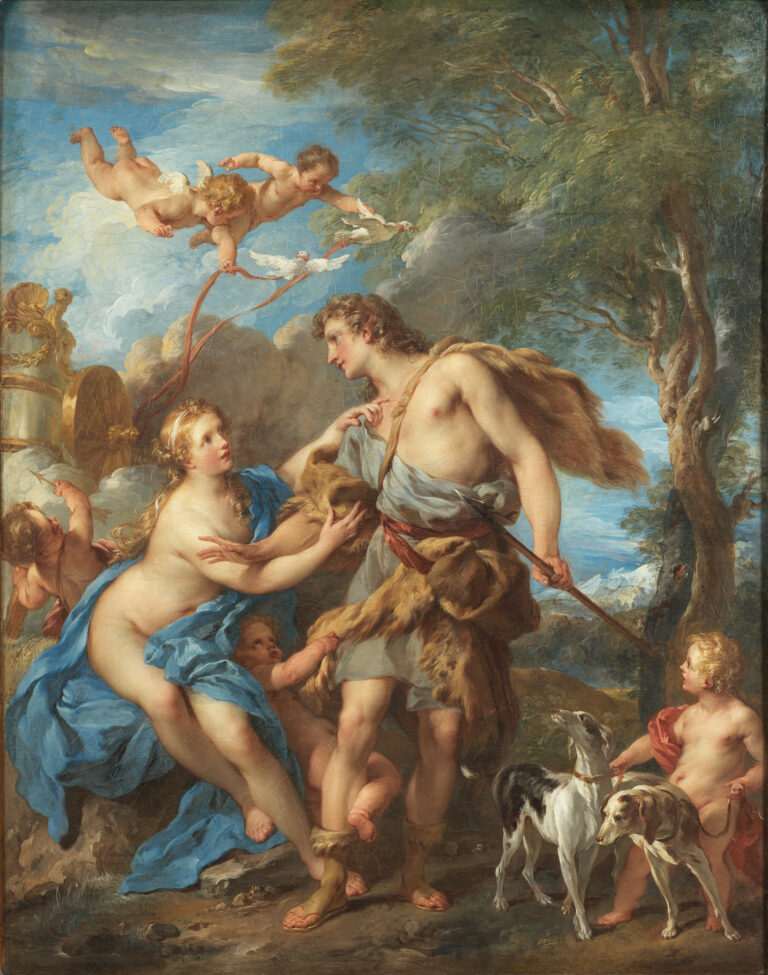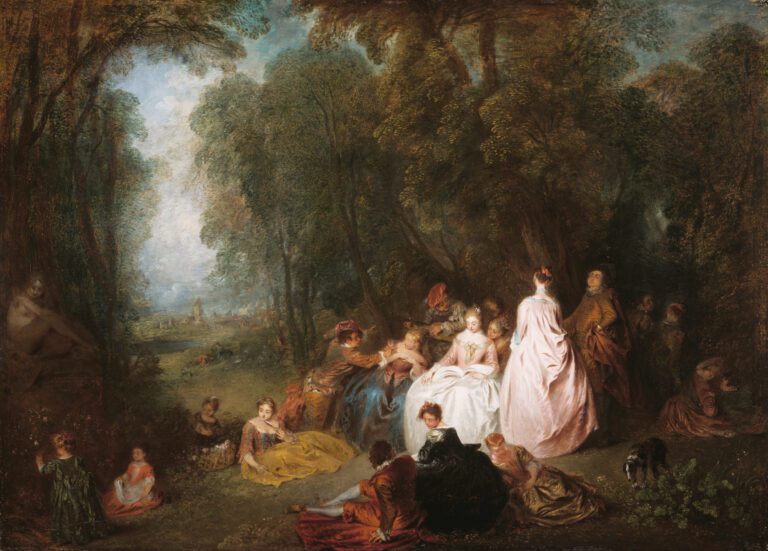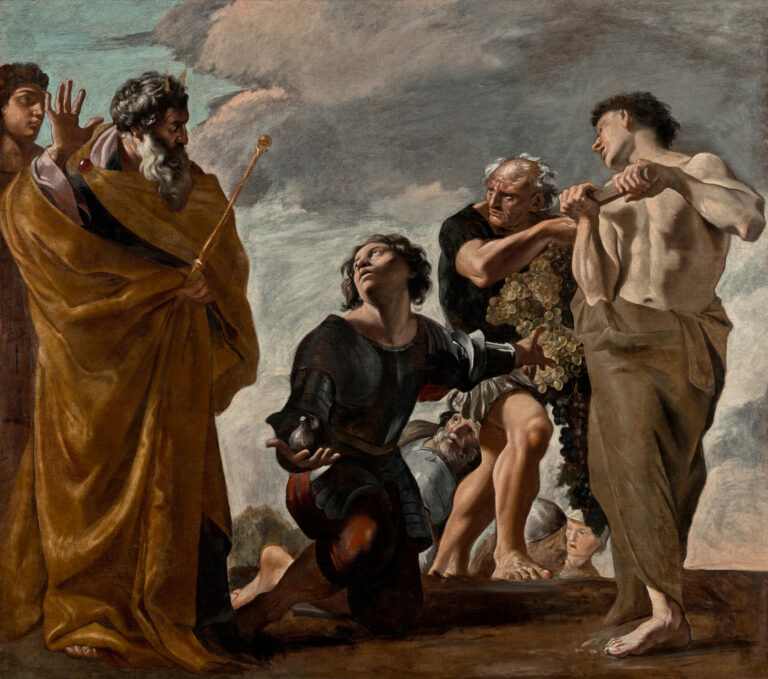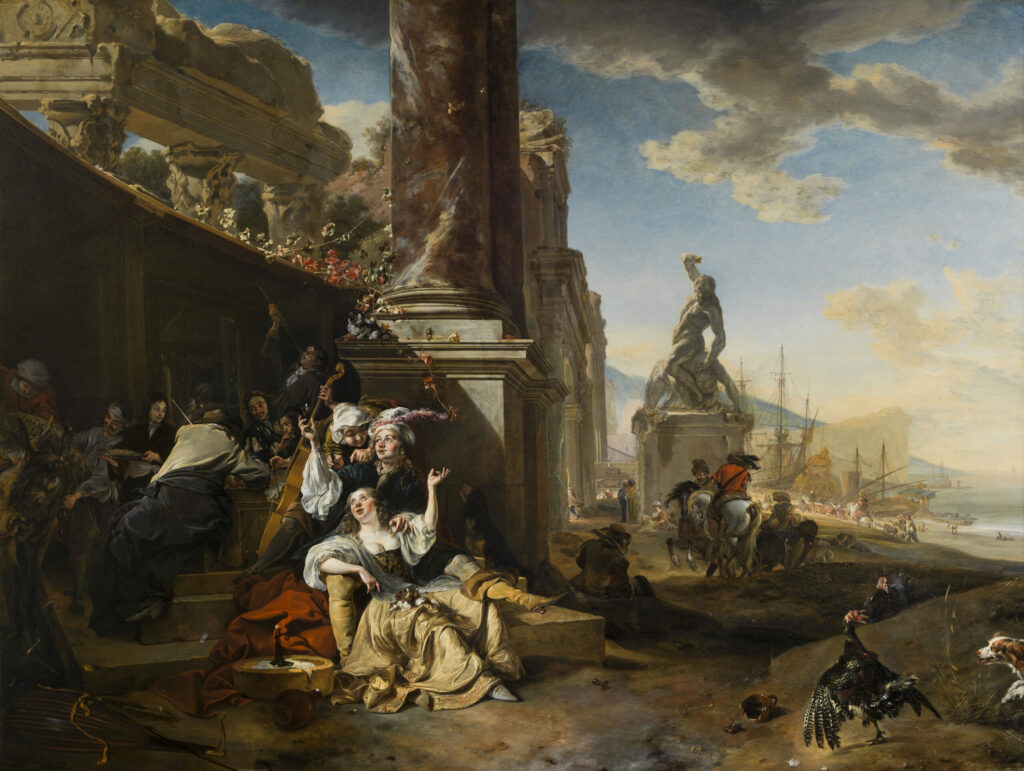
In this early work, Jan Weenix reinterprets the biblical parable of the prodigal son with distinctly baroque theatricality.
The main scene unfolds at the foot of a majestic colonnade, where the young man squanders his fortune in the company of colorful characters. The composition is masterfully orchestrated: in the foreground, a woman in a satin dress abandons herself in a languorous pose, symbolizing the earthly pleasures that seduce the protagonist. The atmosphere of debauchery is emphasized by musicians, drinkers, and even a cockfight—a symbolic detail of moral decline. The grandiose architectural setting, with its monumental columns and floral garlands, deliberately contrasts with the profane nature of the scene. The background opens onto an imagined port, a poetic fusion between East and West, where ships are silhouetted against a twilight sky of golden hues, creating an almost dreamlike atmosphere.
Further Information
- The Merrymaking, painted by Jan Weenix in 1667
- 80 x 107 cm
- Petit Palais, Museum of Fine Arts of the City of Paris, displayed on the Ground Floor, Room 27 – Paris Musées
- https://www.parismuseescollections.paris.fr/fr/petit-palais/oeuvres/la-partie-de-plaisir
Jan Weenix (1640 or 1641 – 1719), in this early work, already demonstrates the technical mastery that would establish his reputation. Son of painter Jan Baptist Weenix, he belongs to the great tradition of Dutch Golden Age painting while infusing it with singular theatricality and exoticism.
Though he would later become famous for his game still lifes and sophisticated hunting scenes, this early interpretation of the prodigal son parable reveals his talent for complex composition and his ability to blend biblical references with contemporary observations. The Italianate influence, perceptible in the architecture and Mediterranean atmosphere, testifies to the impact of Italian travel on Northern artists of this period.

